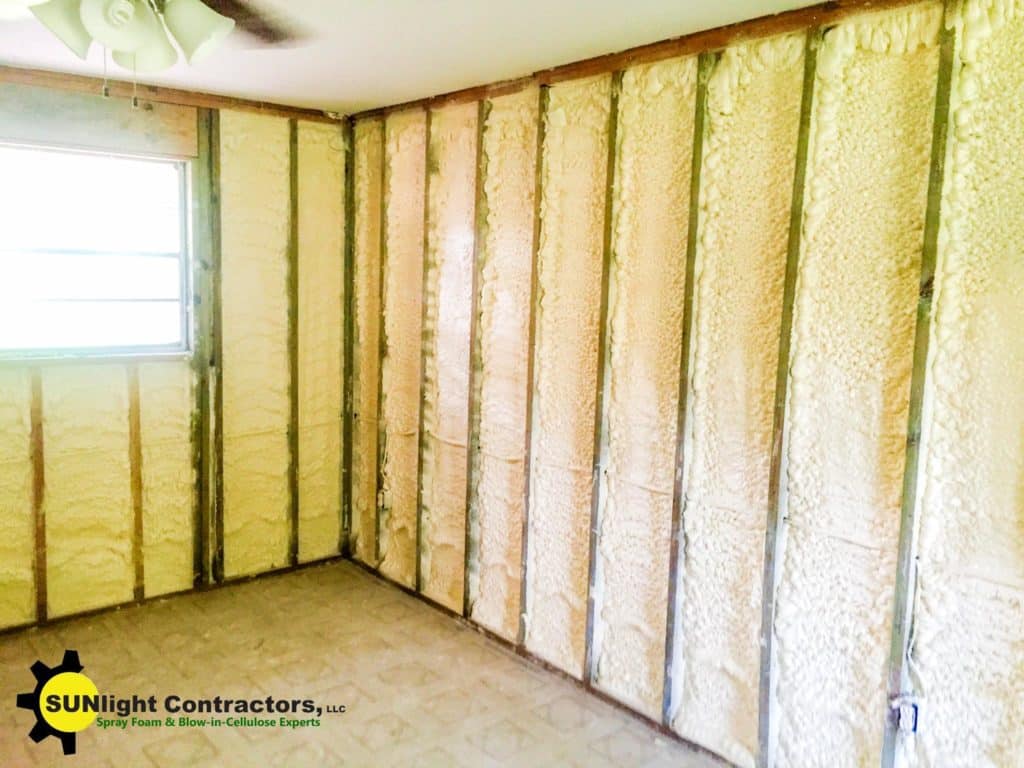Case Study: Leydecker Spray Foam Removal And Proper Installation
Craig Leydecker was excited having purchased a home with spray foam insulation install in the sub floor. Finally, a home with warm floors and no drafts. Unfortunately, it wasn’t as good as he thought and it quickly turned into a spray foam removal expense. Here is Craig’s story.
Craig Leydecker’s initial excitement over his newly purchased home turned to frustration as evidence of the former homeowner’s poor decision-making became more obvious. While an earlier inspection had shown no signs of problems, Craig was certain that something was amiss with his home’s insulation. The floors stayed frigid during the winter despite spray foam insulation, and he didn’t note the kinds of utility savings that many homeowners report when their home is encapsulated with spray foam.
When Ira Bosh of Sunlight Contractors was called to investigate the situation, his team lead by Corey Yates uncovered the source of the problem. The previous homeowner had hired a quasi-professional to do the job, and the cut-rate insulation contractor didn’t have all of the facts regarding spray foam insulation.
While spray foam insulation can do wonders for a home’s moisture and air control, utility costs, and comfort, the questionable contractor had applied the wrong type of spray foam insulation. For crawl space encapsulations, the only choice is closed cell spray foam, which creates a vapor barrier that deflects water and completely insulates floorboards with an airtight seal and an extraordinary R-Value of 6. Closed cell spray foam protects homes from the moisture and colder air that rises from the ground, making it ideal for crawl spaces.
The careless contractor hired by Leydecker’s predecessor had applied open cell spray foam insulation instead. While open cell is an excellent choice for attic and wall encapsulation where bi-directional drying is desirable in the event of unforeseen leaks, it’s absolutely not recommended for crawl spaces, where moisture is a constant.
As a result of this error, the Leydeckers’ home was absorbing both the intolerable temperatures and the damaging moisture of the crawl space. In addition to finding the expected moisture absorption and the wood rot that results from it, Sunlight’s certified insulation contractors found a colony of termites that had taken advantage of the ideal environment created by the open cell spray foam’s misplacement.
Out with the old, in with the new: removing a bad spray foam job
Of course Craig had options. He could have spared himself the expense of spray foam removal and reapplication and just endured the cold floors and termites. However, he recognized that ignoring the problem would ultimately prove more expensive than dealing with it head on.
Painfully aware of the consequences of hiring “professionals” that don’t pass muster, he hired Sunlight Contractors, Louisiana’s SPFA-certified spray foam contractors. Corey Yates, Sunlight’s owner and master spray foam specialist, has sailed through eight written exams and rigorous field testing by the Spray Polyurethane Alliance in order to meet their prestigious certification requirements, and he and his crew are Louisiana’s mostly widely regarded and highly rated insulation contractors.
Over the course of 40 man hours, four Sunlight contractors scraped away at the open cell spray foam that had created Craig’s problems. Beneath the foam, the contractors discovered wood rot from the moisture problems created by damp open cell spray foam and countless termite trails.
Once the contractors had completely removed the open cell spray foam, they sprayed for termites over the course of three days, inspecting three separate times for termites within the wooden substrate beneath Craig’s home. To prevent future invasions, they advised Craig to develop a partnership with a professional termite extermination company to treat his home every quarter for the next few years, even providing the name of a reliable exterminator.
With termites in check and bad insulation removed, Sunlight Contractors began working on sealing up Craig’s home the right way. They used open cell spray foam where it’s meant to be used: in Craig’s attic. As a means of encapsulating attics, open cell spray foam works wonders. It’s high R-Value creates comfort and savings as well as mildew prevention and sound-dampening.
They also took time to insulate Craig’s crawl space with the proper insulation: two pound, high density closed cell spray foam. Closed cell spray foam applied to the home’s sub-flooring eliminates termite’s food sources, seals out moisture, and provides the highest R-Value on the market, making cold floors a thing of the past.
An open and closed case of spray foam detection and correction
Craig immediately felt the difference of a properly insulated home, and he expressed candid gratitude towards the spray foam professionals at Sunlight Contractors.
“This man called Ira came out of nowhere almost like an angel from heaven, and he explained exactly what needed to be done. They were spraying foam in places…little cracks and crevices … that no one would find, except for Ira and his men, and I just want to say, ‘thumbs up to you; thank you!”

